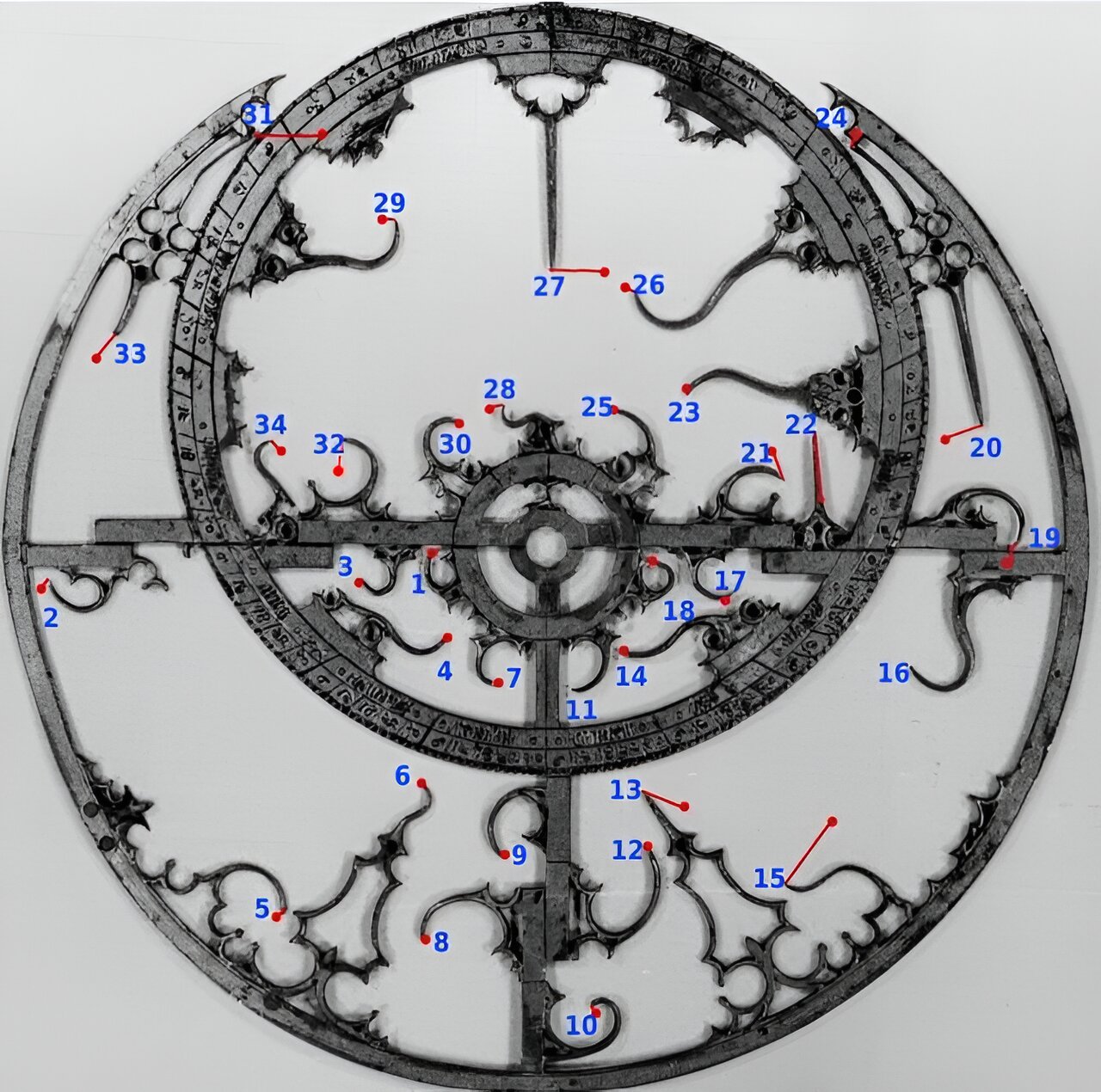Astrolabe is an ancient astronomical tool for determining the position of stars in the sky based on the position of the Sun. The age of one of them has not been known yet, but astronomer Emmanuel Davoust could determine it by using the coordinates of the stars for this purpose.

Amazing Astrolabe
Astronomer Emmanuel Davoust, who lives in Toulouse in the south of France, has recently become interested in an astrolabe kept in a local museum. This is an ancient astronomical tool that, depending on the task, allows you to find the coordinates of the stars and determine the exact time based on the position of the sun and the coordinates of the terrain.
Or, on the contrary, they can be used to determine the coordinates on Earth where the observation takes place. All this is possible thanks to the stereographic projection, which shows the hemisphere of the starry sky on a plane and allows measuring the coordinates of the stars on scales that are plotted on tricky curves that can move.
At the same time, astrolabes are also real works of art, since they are often adorned with various ornaments. However, their age cannot always be accurately determined from archival documents. However, a possible answer lies in their very design.
When was the astrolabe made?
In fact, the coordinates of the stars are not something unchangeable. The luminaries in the sky are very slowly shifting because each of them is a fireball flying in its own orbit around the center of the Galaxy. Over time, astrolabes began to “lie”, and it was this fact that allowed Emmanuel Davoust to determine the age of the tool.
The Toulouse astrolabe contains marks for 34 stars, which, however, are unsigned. But the astronomer could identify them, assuming that they should be bright. Next, he used modern astronomical catalogs to determine when exactly they occupied the position shown by the astrolabe.
In order to facilitate the search, the scientist limited it to a time interval between 1400 and 1700 years. He also determined the positions of the stars in this interval, with gaps of 50 years. Thanks to this, he was able to establish that the positions of the stars, which were observed around 1550, best correspond to the astrolabe.
The match is incomplete, and the reason for this is difficult to establish. Perhaps it’s because the time intervals are too long. Perhaps the medieval measurements were inaccurate. In any case, it is clear that the tool was made around the middle of the 16th century.
According to phys.org
Follow us on Twitter to get the most interesting space news in time
https://twitter.com/ust_magazine


